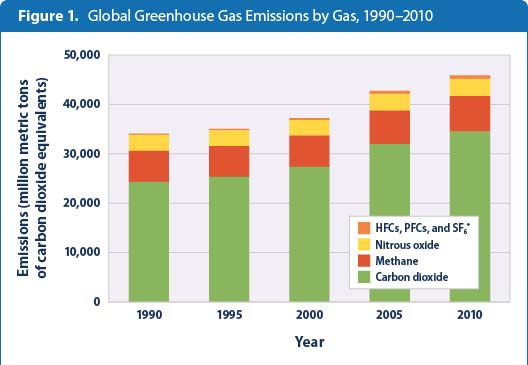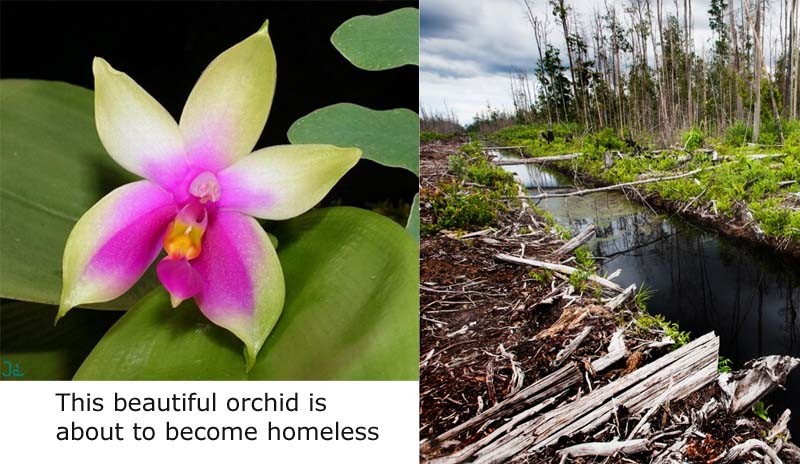
A New Year’s Revolution – Let’s save the planet.
Happy New Year to our orchid conservation readers! This is the year to focus on biodiversity and climate change. What a New Year’s Resolution (or Revolution) that would be!
It is time to bring out the champagne and celebrate not only the New Year (2016) but also the COP 21 in Paris at the climate talks. On second thought, maybe we should celebrate just the New Year. Although the COP 21 agreements will slow down the damage we are inflicting on our planet, they will not be enough.
Climate change conferences – are they effective?
So far we have witnessed 20 meetings prior to Paris starting in Rio de Janeiro in 1992 each attended by enthusiastic and knowledgeable representatives of 195 countries. But over this time frame, and in spite of this enthusiasm and knowledge, global carbon emissions have risen from roughly 20 billion tons a year to 35 billion tons. The successes of prior climate summits have, of course, kept this emission number from going even higher than that. But the emissions are still rising faster than the Earth can assimilate, and we are seeing the drastic results on a daily basis.

Source: www.epa.gov
Since the 1992 meeting we have witnessed the massive loss of forests and orchid habitats. These forests have been converted to palm oil plantations, agricultural projects for growing animal feed, and other such uses. It is hard to imagine how they could ever be returned to their original state — as a habitat that supports a diversity of flora and fauna.
This is the issue that is near and dear to the hearts of orchid lovers. But it is also an issue that is important to the climate talks. “About 15% of global greenhouse gas emissions come from tropical deforestation (more than from all the world’s cars, truck and buses combined)” reports the Environmental Defense Fund. Addressing this issue, “Brazil has proposed emission reductions of 37% by 2025, but on forest policy, President Rousseff is unwilling to commit to more than stopping illegal deforestation by 2030.”
How consumer demand hampers combatting climate change
Perhaps we should leave the champagne in the bottle and put back the cork, good and tight. The knowledge and enthusiasm alone are just not enough to address the problem. To the major agricultural industry players the world’s forests are regarded in the same way as oil is to the petroleum industry. As long as oil is in the ground, oil companies are going to drill for it — least until such time as the demand for oil is significantly reduced. The same forces apply to our planet’s forests. As long as there is a demand for major agricultural commodities, the food industry will find a way to meet this demand. And that means clearing more forests.
So, the food industry is driving this demand and we, the consumers, are quietly complying. It is through our purchasing choices that what remains of our natural habitats is being destroyed. A major destructive force, the palm oil industry, is projecting a 65% increase in production over the next 5 years. That can only come from more forests being cleared. Nowhere have we seen any limits being put on this industry. And moratoriums on deforestation have gone nowhere with governments as we just saw with Brazil. The industry makes claims that their palm oil is from “sustainable” sources. But if we investigate further, we find that their concept of “sustainable” is a gross misrepresentation, at best.
 We, as consumers, are the only economic forces that can change this picture. Admittedly, reducing palm oil product consumption is difficult, due to the prevalence in so many products which contain it. But, armed with a little knowledge and dedication, we can reduce, if not eliminate the demand. Every little bit helps.
We, as consumers, are the only economic forces that can change this picture. Admittedly, reducing palm oil product consumption is difficult, due to the prevalence in so many products which contain it. But, armed with a little knowledge and dedication, we can reduce, if not eliminate the demand. Every little bit helps.
That being said, an easier target might be soy. Soy production has grown by a factor of 10 over the last 50 years, and the demand for soy is as destructive to habitats as the demand for palm oil. The worldwide cultivation of soy consumes an area roughly the size of France, Germany, and the United Kingdom combined, and in the U.S., is second only to corn. With increasing demand, its new expansion is creeping into native forests and grasslands in the US Northern Great Plains and Brazil’s Cerrado. You will be interested to know that if you use soy milk or tofu (a soy product), you are not the culprit, because an incredible 75% of soy raised worldwide becomes animal feed.
Adopting a plant-based diet would help our planet and promote better health
A commonly held assumption is that we need to consume animal products, notably meat, in order to meet our daily requirements for protein. Nothing could be further from the truth. While it is true that meat, dairy, fish, and eggs do supply protein, we can easily get enough protein from eating whole grains, beans and other legumes, nuts and vegetables. And because these plants are much lower in fat (and calories) than animal products, we can more easily manage our weight in the process. More about protein here.
We have read many books and articles on this subject, and are discovering new sources almost daily. The book that started us on the course of more sustainable eating is “May All Be Fed” by John Robbins (also published under the title “Diet for a New World”). Even back in 1992, when he first wrote this book, here is what was happening:
“The livestock population of the United States today (1992) consumes enough grain and soybeans to feed more than five times the entire human population of our country. We feed these animals more than 80 percent of the corn we grow, and more than 95 percent of the oats. … Two thirds of all grain exported to other countries from the U.S. goes to feed livestock, rather than to feed people. Only a tiny minority of the people in most of these countries can afford meat. In fact, many people go to bed hungry every night, and mothers must often watch helplessly as their children starve. … In Guatemala, much of the land and other resources for food production is given over to producing meat, while 75 percent of the children under five years of age are undernourished. The meat produced doesn’t go to those in need. It goes to those who can afford it. Every year Guatemala exports forty million pounds of meat to the U.S.” Robbins goes on to relate how Guatemala’s story is repeated throughout many other developing nations.
A growing population requires better use of available land
As the world’s population grows, and as productive farmland decreases due to drought and soil erosion, we must come together as a world community to manage usable land more effectively and efficiently. A given amount of land can feed more than six times as many people eating a vegetarian diet than those eating a meat-based diet. (Robbins, p. 34). When we couple that with the health benefits of a plant-based diet, it is difficult to justify any other method of eating.
And if anyone is still determined that we need meat in order to be strong and healthy, we would challenge that belief by using the example of a horse. These beautiful creatures subsist mostly on oats and other grains, along with water, and yet they are strong and powerful, to the extent that they have for many years been held as a standard. We say someone is “healthy as a horse”, and we measure a machine’s ability to do work in “horsepower”. What more proof do we need?
Let us make our New Year’s resolution a New Year’s revolution. Let the force be with you.![]()